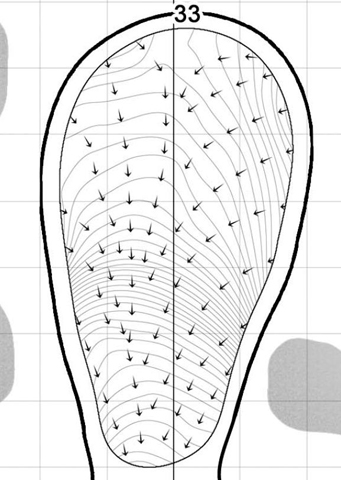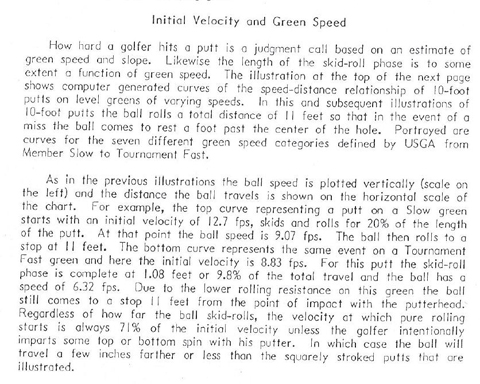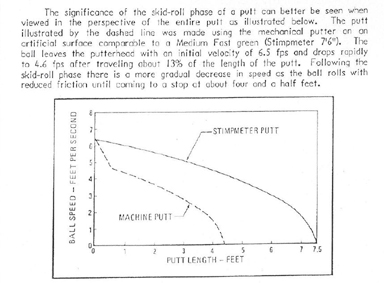Hi,
I just wanted to bring this putting table to anyone who might have an interest in this subject of Vector Putting which was a book written some time ago by HA Templeton. I have found this putting by the numbers helpful lately and wanted to share how I have been using the table…It is still a work in progress but have been fooled less and less on reading greens.
How to Use the Table on The Fly
- Steps are steps you take at 30 inch increments. You need to practice walking with a measuring wheel enough to convince yourself you really can pace steps 30 inches at a time…So when you play first pace off your putt. Ex: 4 Paces
- Determine what your green’s slope is in percent…Go to the lowest part of your green as you approach the green. (Maybe this should have been step 1?) Look for the highest point once at the lowest point. Most greens I play are 100 feet in length. If the highest point is lower than a standard putter’s length, then you know that the whole green slopes less than 3%. Take your best guess how far up the putter the highest point is and you now have a good idea of the percent slope of the green. Ex: 1 foot of height.
- Now I do some quick math…4 paces minus 1 (1% slope) = 3 inches of break Max for a constant sloping green. If I had 2% slope I add back in the number of paces for a total of 7 inches of break…3% - I add the first 2 columns together to get 10 inches of break…
- I determine exactly where I am on the Putting Face Clock with 6 o’clock being straight uphill. Walk up to the hole and hold your putter between your thumb and forefinger. Make small circles with the putterhead and eventually the putterhead will swing close to the gravity fall line as the circles die out.
- If I’m straight up the fall-line in this case, I putt the ball at the optimal speed with an addtional 3 inches of length. If I’m at 3 or 9 o’clock then I aim 3 inches higher than a straight putt.
I understand these are very general rules of thumb and many more variables go into this but I’m doing the above mini Aim-Point calculations in my head, not holding up play, and it seems to be helping when I hit a GIR






